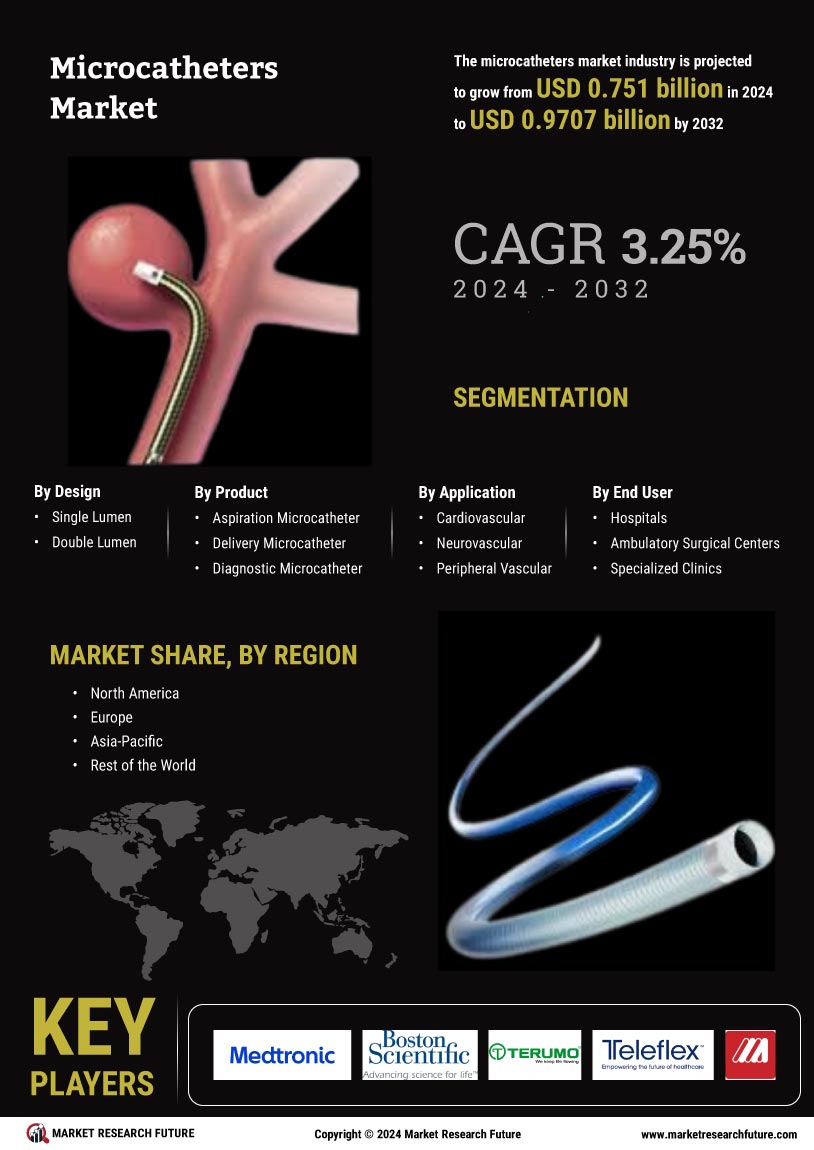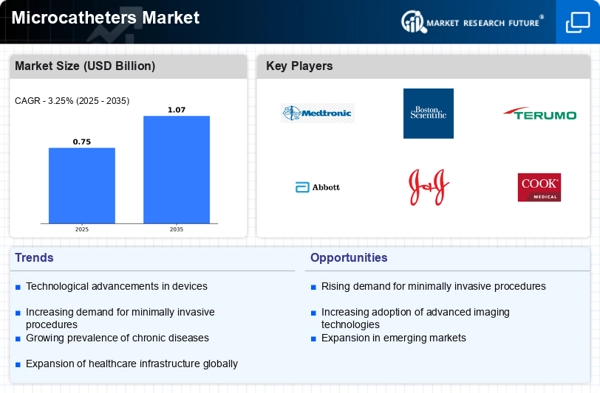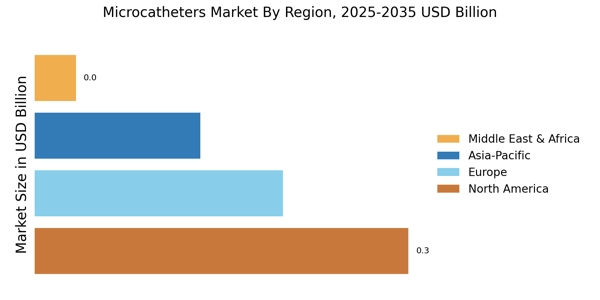Supportive Regulatory Frameworks
Supportive regulatory frameworks are fostering growth in the Microcatheters Market. Regulatory bodies are increasingly recognizing the importance of minimally invasive technologies and are streamlining approval processes for innovative medical devices. This regulatory support not only accelerates the introduction of new microcatheter products but also enhances confidence among manufacturers and healthcare providers. As a result, the market is witnessing a surge in new entrants and product innovations, which are essential for meeting the evolving needs of healthcare systems. The favorable regulatory environment is likely to sustain the momentum of the Microcatheters Market, encouraging further advancements and adoption.
Increasing Prevalence of Chronic Diseases
The rising incidence of chronic diseases such as cardiovascular disorders, cancer, and neurological conditions is a primary driver for the Microcatheters Market. As these diseases require advanced treatment options, the demand for microcatheters, which facilitate targeted drug delivery and minimally invasive procedures, is expected to grow. According to recent data, cardiovascular diseases alone account for a significant percentage of global mortality, necessitating innovative solutions like microcatheters. This trend indicates a shift towards more specialized medical devices that can enhance patient outcomes while reducing recovery times. Consequently, the Microcatheters Market is likely to expand as healthcare providers seek effective tools to manage these complex conditions.
Rising Preference for Outpatient Procedures
The growing preference for outpatient procedures is significantly influencing the Microcatheters Market. Patients and healthcare providers alike are increasingly favoring treatments that allow for quicker recovery and reduced hospital stays. Microcatheters Market, known for their minimally invasive nature, align perfectly with this trend, offering effective solutions for various procedures without the need for extensive surgical interventions. Market data suggests that outpatient procedures are projected to grow at a substantial rate, further driving the demand for microcatheters. This shift not only enhances patient satisfaction but also reduces healthcare costs, making microcatheters an attractive option for both patients and providers.
Technological Innovations in Microcatheter Design
Technological advancements in microcatheter design are propelling the Microcatheters Market forward. Innovations such as improved materials, enhanced flexibility, and advanced imaging capabilities are making microcatheters more effective and user-friendly. For instance, the introduction of biocompatible materials has reduced the risk of complications, thereby increasing their adoption in various medical procedures. Furthermore, the integration of real-time imaging technologies allows for better navigation and placement of microcatheters, which is crucial in delicate procedures. As these technologies continue to evolve, they are expected to drive market growth by attracting more healthcare professionals to utilize microcatheters in their practices.
Expanding Applications in Interventional Radiology
The expanding applications of microcatheters in interventional radiology are a key driver for the Microcatheters Market. Interventional radiology encompasses a range of minimally invasive procedures that utilize imaging guidance, and microcatheters play a crucial role in these interventions. Their ability to deliver targeted therapies directly to affected areas enhances treatment efficacy while minimizing damage to surrounding tissues. As the field of interventional radiology continues to grow, the demand for specialized microcatheters is expected to rise. This trend indicates a broader acceptance of microcatheters in various therapeutic areas, further solidifying their position in the medical device market.


















Leave a Comment